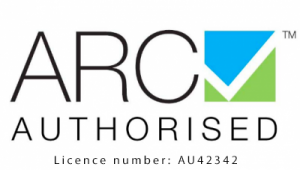In today’s automotive world, technology plays a pivotal role in ensuring vehicles run efficiently and safely. One of the critical components in modern car maintenance is the use of Diagnostic Trouble Codes (DTCs). These codes are essential for identifying and resolving issues quickly, saving both time and money. In this blog post, we’ll explore what DTCs are, how they work, their limitations and why they are useful for diagnosing automotive faults.
What are Diagnostic Trouble Codes?
Diagnostic Trouble Codes, or DTCs, are alphanumeric codes that your vehicle’s onboard diagnostics system (OBD-II) generates when it detects a problem. These codes correspond to specific issues within the vehicle’s systems, such as the engine, transmission, or emissions control. When a fault is detected, the OBD-II system may trigger the “Check Engine” or other warning light on the dashboard, alerting the driver that there’s an issue that needs attention.

How DTCs Work
Modern vehicles are equipped with numerous sensors that monitor various components and systems. These sensors continuously send data to the various control modules (basically little computers) that control the different vehicle systems. Depending on the vehicle, these can include the engine control module (ECM), transmission control module (TCM) and body control module (BCM). Modern vehicles will have at least ten modules, with thirty or forty not uncommon.
When a module identifies a parameter that is out of the expected range, it logs a DTC and stores it in the vehicle’s memory. This stored code can then be accessed using a diagnostic scan tool, which reads the codes and translates them into readable information.
The Structure of a DTC
- A typical DTC consists of five characters:
- The first character (a letter) identifies the system related to the fault (e.g., P for powertrain, B for body, C for chassis, and U for network).
- The second character indicates whether the code is generic (applicable to all vehicles) or manufacturer specific.
- The third character denotes the subsystem involved.
- The last two characters are numerical and pinpoint the specific fault.
For example, the DTC “P0301” indicates a powertrain issue (P), specifically a misfire detected in cylinder 1.
Advantages of DTCs in Automotive Diagnostics
-
Quick and Accurate Fault Identification
DTCs provide a precise starting point for diagnosing vehicle issues. Instead of spending hours manually inspecting each component, technicians can quickly identify the problem area and focus their efforts on resolving it. This efficiency not only saves time but also reduces labor costs for the customer.
-
Preventing Further Damage
By alerting drivers to potential issues early, DTCs help prevent minor problems from escalating into major, costly repairs. Addressing a DTC promptly can avoid further damage to the vehicle’s systems, ensuring better longevity and performance.
-
Enhanced Safety
Some DTCs are critical and can affect the safety of the vehicle. For instance, issues related to the braking system, airbags, or stability control are paramount to driver and passenger safety. By identifying these faults for prompt rectification, DTCs contribute significantly to road safety.
-
Environmental Protection
DTCs also play a role in environmental protection. Many codes are related to the vehicle’s emissions control system. By ensuring these systems are functioning correctly, DTCs help reduce harmful emissions and ensure the vehicle complies with environmental regulations.

Limitations of Diagnostic Trouble Codes
A common misconception is that DTCs are the beginning and the end of the diagnostic process. Mechanics often hear the hear phrase “You just plug in your computer, and it’ll tell you what’s wrong!”. Not true. While DTCs are defiantly useful, they almost never provide the complete picture. Here are some of the main limitations:
-
Limited Information Scope
DTCs provide a starting point for diagnosis but often lack detailed information about the specific cause of a problem. For example, a code indicating an engine misfire won’t specify whether the issue is due to a faulty spark plug, a bad fuel injector, or another component. Further diagnosis is required to pinpoint the exact cause.
-
Potential for Misleading Diagnoses
DTCs can sometimes lead to misleading diagnoses. For instance, a sensor malfunction code might be caused by a problem in the wiring or a related system. Technicians need to interpret the codes carefully and consider the broader context of the vehicle’s symptoms.
-
False Positives and Intermittent Issues
Sometimes, DTCs can be triggered by transient or intermittent issues that are difficult to replicate. This can result in “false positives” where the code indicates a problem that isn’t consistently present, making it harder to diagnose and repair.
-
Lack of Contextual Data
DTCs often do not provide contextual data about the conditions under which the fault occurred. For example, they might not indicate whether the problem happened during acceleration, idling, or deceleration. Technicians may need to use additional diagnostic tools and methods to gather this context.
-
Requirement for Specialised Equipment
Reading and interpreting DTCs requires specialised diagnostic equipment. While basic code readers are widely available, more complex diagnostic tools that provide deeper insights can be expensive and require specialised training to use effectively.
-
Not All Issues Generate DTCs
Not all vehicle problems will trigger a DTC. Mechanical issues, such as problems with the suspension or brakes, may not be detected by the OBD system. Additionally, early stages of some faults might not generate a code until the problem worsens.
-
Need for Experienced Interpretation
Interpreting DTCs correctly often requires significant experience and expertise. Inexperienced technicians might misinterpret codes, leading to incorrect repairs. Understanding the nuances and possible underlying causes of a code is crucial for accurate diagnosis.
The Process of Diagnosing with DTCs
Step 1: Reading the Codes
Technicians use a diagnostic scan tool to read the DTCs stored in the vehicle’s memory. These tools can be connected to the OBD-II port, typically located under the dashboard.
Step 2: Interpreting the Codes
Once the codes are retrieved, they need to be interpreted. Each code points to a specific issue, but further investigation is often required to pinpoint the exact cause. For example, a misfire code might be caused by a faulty spark plug, a bad ignition coil, or an issue with the fuel injector.
Step 3: Diagnosing and Repairing
Based on the DTCs and additional diagnostics, technicians will perform the necessary repairs or replacements. After the repair, the codes are cleared from the system, and the vehicle is tested to ensure the issue is resolved.
Step 4: Preventive Measures
Technicians may also provide recommendations for preventive maintenance to avoid similar issues in the future. Regular servicing and timely attention to minor faults can significantly enhance the vehicle’s reliability and performance.
Conclusion
While DTCs are a powerful diagnostic tool, they are not a panacea for all vehicle issues. Effective use of DTCs requires a combination of the right diagnostic equipment, technical knowledge, and practical experience. By being aware of their limitations, technicians can better interpret DTCs and perform more accurate and efficient vehicle repairs. This understanding ensures that DTCs serve as a useful component of a comprehensive diagnostic approach, rather than the sole basis for diagnosing automotive faults.
Book Now








